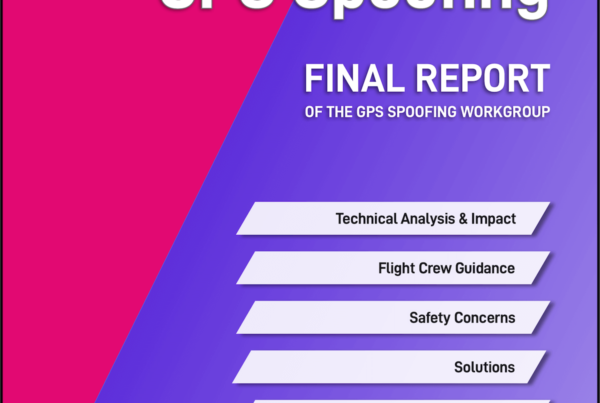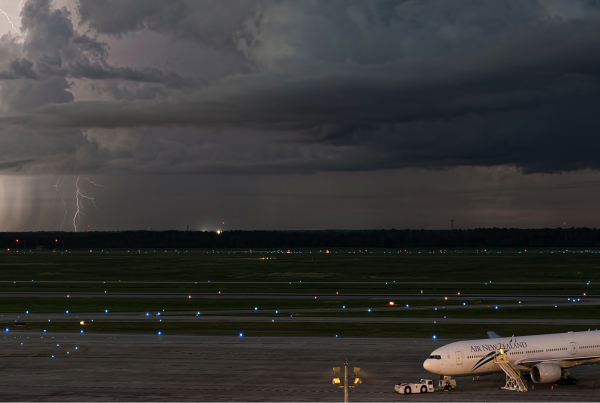25. What is a Navigation Accuracy Check?
Prior to entering any airspace requiring the use of a long-range navigation system, the aircraft position shall be accurately fixed using airways navigation facilities or ATC radar. After exiting this airspace, the aircraft position shall be accurately fixed and the long- range navigation system error shall be determined and logged in accordance with the operator’s approved procedures. NAT Document #007, Guidance Concerning Air Navigation in and above the NAT MNPSA Chapter8, Paragraph 8.4.9
26. Can a GPS instrument approach be flown with an expired database?
If the database has expired or, If during the flight the AIRAC cycle changes, operators should establish procedures to ensure the accuracy of navigation data, including suitability of navigation facilities used to define the route of flight, and approach. Traditionally, this has been accomplished by verifying electronic data against paper products. An acceptable means is to compare aeronautical charts (new and old) to verify navigation fixes prior to dispatch. If an amended chart is published for the procedure, the data within the database shall not be used to conduct the operation. The pilot must verify that the instrument procedure has not been amended since the expiration. For en route and terminal use, the pilot must verify the data for correctness if the database is not current. See Table 1-1-6 in the Aeronautical Information Manual and AC 90-100a, Para. #10. AC 90-96a #Para. 2a
27. Name the elements of an oceanic ATC clearance.
3 Elements – Flight Level, Mach and Route. NAT Document #007, Guidance Concerning Air Navigation in and above the NAT MNPSA Chapter5, Paragraph 5.1.9
28. How many nautical miles is 1 degree of latitude?
60 Nautical Miles. FAA H-8083-25A Pilot’s Handbook of Aeronautical Knowledge, Chapter 15, Page 15-4
29. How many nautical miles is 1 degree of longitude?
Depends on latitude, the lines come together at the poles and are farthest apart at the Equator. FAA H-8083-25A Pilot’s Handbook of Aeronautical Knowledge, Chapter 15, Page 15-4
30. Does the ICAO make the rules and procedures internationally?
ICAO does not require any regulation. It sets standards and recommends practices that each signatory State (read country) has the option to accept and enforce or not, in their own regulatory environment. One of the Articles of the Convention guarantees this right. As such, ICAO has no authority over rulemaking in the US, for US Operators.14CFR 91.703 does direct US operators to follow specific ICAO procedures while over the “High Seas”
31. I’ve recently head a pilot mentioning a requirement for “Aircraft operating certificate in Europe” For Part 91 Operations, do we need to compile with this regulation to operate in Europe?
An AOC is not a requirement for an FAA Part 91 General Aviation operation. A change to ICAO Annex 6 in 2010 requires an AOC be in a standardized format and Certified True Copy for commercial operations. This may be part of the confusion. There is an FAA Info to Operators that describes this in detail. InFo#09019 dated 12/1/09. The key is to prove to a foreign inspector that your operation is GA vice commercial. There also is an AC that helps. AC 120-12A dated 4/24/86 describes what defines “Commercial Operations”.
32. I thought that with ADS-C the aircraft was sending position reports to a ground station (once logged on), Why do I have to make HF radio calls?
HF radios would be used to voice report position, maintain a back up to CPDLC. SELCAL would also have to be checked for functionality. Global Operational Data Link Document (GOLD) Chapter 5, Paragraph 5.1.3.7
33. In reference to ATC Clearances, I can’t find a good working definition of the words “At” or “By”
“At” would indicate that the pilot takes the appropriate actions so
as to arrive at the correct position (vertical, lateral,
horizontal) specified in the clearance at the specified time or
location.
“By” would indicate that at the pilot’s prerogative the appropriate
action would be taken so as to arrive at the correct position
(vertical, lateral, longitudinal) before the position specified in
the clearance.
If unsure of what the clearance is requiring, query the controller and get confirmation. ICAO Document #4444, Paragraph 12.3.1, GOLD Document, Appendix A, UM21,UM26 and Oceanic Errors Safety Bulletin, OESB 01-09 “Large Height Deviations” and “Controller Pilot Data Link Communication”
34. Explain why you would expect a time-delay when transmitting position reports and requesting clearances from oceanic communications facilities.
It is important that pilots appreciate that routine air/ground ATS Voice communications in the NAT Region are conducted via aeroradio stations staffed by communicators who have no executive ATC authority. Messages are relayed by the ground station to/from the air traffic controllers in the relevant OAC. Guidance concerning Air Navigation in and above the NAT MNPSA, NAT Document #007, Chapter 6, Paragraph 6.1.1
35. Explain the term “IFBP” and where would you use it?
“The IATA broadcast is a specially formatted position report to enhance situational awareness in Africa and is recommended to be used:
A) In central Africa operations on 126.9.
B) When operating off airways.
C) For flight level changes only.
D) Throughout most of the continent, as a backup to ATC, and as an awareness tool for other aircraft. Broadcasts should be made in the format published on the Jeppesen Africa High/Low Enroute 1 / 2 en-route chart. IATA broadcast is recommended en-route for these specifics:
A) 2-5 minutes before change in flight level
B) At the time of a flight level change
C) 5 minutes prior to a reporting point
In-Flight Broadcast Procedures 5.1 2010 http://www.iata.org
36. Are MET reports required?
ICAO Annex 3, Chapter 5, Paragraph 5.4 and 5.5exempts non-Data Link aircraft from making routine MET reports. However, special reports are required for observations of moderate icing, moderate turbulence, volcanic ash ect.
37. Is there a route from Florida along Cuba to Cancun that is Class I airspace? It seems on the edge; but I have seen references of extended range ground based nav-aids?
This basically comes down to a question of what is the Standard Service Volume for the ground based Navaids involved. SSV is dependent on power output of the facility and the altitude of the aircraft. High VOR’s are listed to have a SSV of 130NM between FL180 and FL450. HH NDB’s have a SSV of 75NM. DME has a SSV of 199NM. This may be the reference to extended range navaids you have seen. Using these mileages, the critical part comes in when crossing the Yucatan Channel between Cuba and Mexico. The shortest route I could find is Gerona NDB (UNG) along UR519 to Cancun VOR (CUN), 227NM between navaids. I cannot find any reference to extended range capabilities of CUN or UNG. 227NM is the mileage listed on the chart along UR519. As an alternate route I would offer UCY, UR506, NUDAL. It is the next best distance at 252NM. Both routes are longer than 205NM (130+75), This would be legal as a Class One routing by 22NM and 47NM. 14 CFR 91.511
38. Where is the datum that MSL (mean sea level) is measured?
“Mean Sea Level (MSL) is a local tidal datum which is determined by averaging the hourly height readings over a specific 19 year period. NOS operates a network of water level stations for which those local datums are determined. The term MSL has also been confused with the geodetic datum, National Geodetic Vertical Datum of 1929 (formerly called the Sea Level Datum of 1929).
http://tidesandcurrents.noaa.gov/datum_options.html
39. I am looking for a site or program that you use to get current weather and information for the city that you are arriving into for the CEO’s review?
Try this website: http://www.intellicast.com/
40. What is a “Maintenance Release” and how do I get one for a FAA Part 91 Operation?
Very basically, the European inspectors are looking for an entry in an aircraft maintenance logbook (Technical Log) that reads something like “On this date aircraft released for XXXdays of flight” and signed off by an A and P maintenance tech. A good description is found in the UK’s CAP 393, Air Navigation the order and procedures, Section3, Item #30
41. How do I find a HF frequency that would work on the ground in the Mid Atlantic area for the purposes of an HF check?
Go to the ARINC-2 page in your Jeppesen subscription. You will find a list of VHF frequencies to contact AIRINC and then ask the Radio Operator which HF frequencies are good at that particular moment. An alternate method is calling NY AIRINC at 631-589-7272.
More on the topic:
- More: Mexico Customs Surprises: Pills, Vapes, and Laptop Rules
- More: Greenland NAT Alternates: Dec 2025 Update
- More: Crossing the Quiet South: From Australia to Argentina
- More: Major runway shutdowns ahead at KVNY/Van Nuys
- More: New FAA Airspace Warnings for Venezuela and Puerto Rico
More reading:
- Latest: Mexico Customs Surprises: Pills, Vapes, and Laptop Rules
- Latest: Greenland NAT Alternates: Dec 2025 Update
- Latest: Crossing the Quiet South: From Australia to Argentina
- Safe Airspace: Risk Database
- Weekly Ops Bulletin: Subscribe
- Membership plans: Why join OPSGROUP?











 Get the famous weekly
Get the famous weekly 




